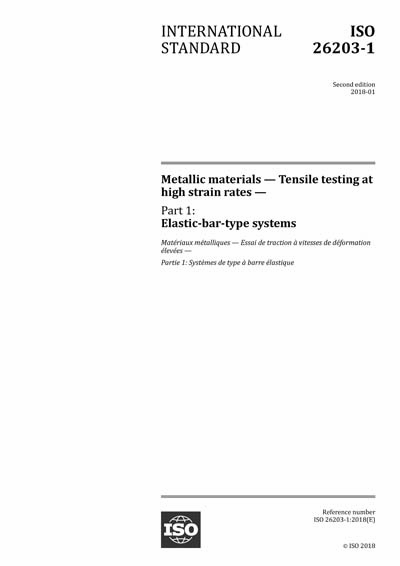Most recent
ISO 26203-1:2018
Metallic materials - Tensile testing at high strain rates - Part 1: Elastic-bar-type systems
ISO 26203-1:2018 specifies methods for testing metallic sheet materials to determine the stress-strain characteristics at high strain rates. This document covers the use of elastic-bar-type systems.
The strain-rate range between 10−3 and 103 s−1 is considered to be the most relevant to vehicle crash events based on experimental and numerical calculations such as the finite element analysis (FEA) work for crashworthiness.
In order to evaluate the crashworthiness of a vehicle with accuracy, reliable stress-strain characterization of metallic materials at strain rates higher than 10−3 s−1 is essential.
This test method covers the strain-rate range above 102 s−1.
NOTE 1 At strain rates lower than 10−1 s−1, a quasi-static tensile testing machine that is specified in ISO 7500‑1 and ISO 6892‑1 can be applied.
NOTE 2 This testing method is also applicable to tensile test-piece geometries other than the flat test pieces considered here.
Content Provider
International Organization for Standardization [iso]






